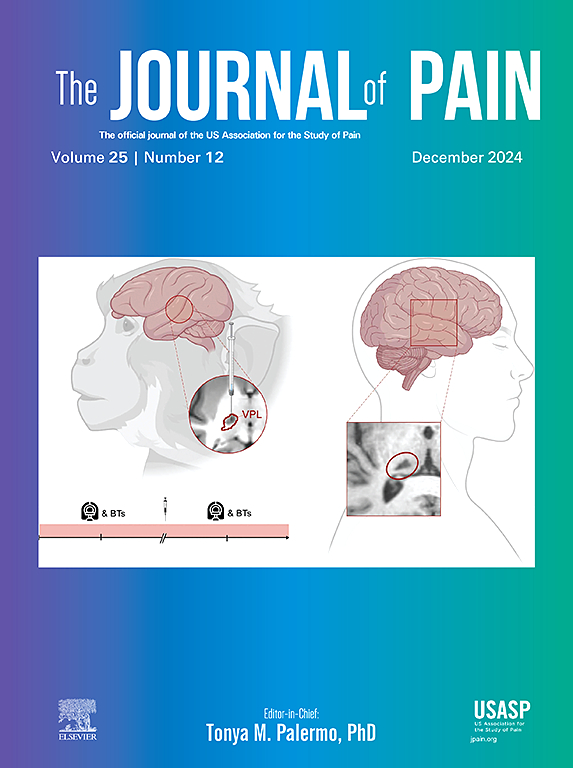Identifying patient subgroups in the heterogeneous chronic pain population using cluster analysis
IF 4
2区 医学
Q1 CLINICAL NEUROLOGY
引用次数: 0
Abstract
Chronic pain is an ill-defined disease with complex biopsychosocial aspects, posing treatment challenges. We hypothesized that treatment failure results, at least partly, from limited understanding of diverse patient subgroups. We aimed to identify subgroups using psychological variables, allowing for more tailored interventions. In a retrospective cohort study, we extracted patient-reported data from two Dutch tertiary multidisciplinary outpatient pain clinics (2018–2023) for unsupervised hierarchical clustering. Clusters were defined by anxiety, depression, pain catastrophizing, and kinesiophobia. Sociodemographics, pain characteristics, diagnosis, lifestyle, health-related quality of life and treatment efficacy were compared among clusters. A prediction model was built utilizing a minimum set of questions to reliably assess cluster allocation. Among 5466 patients with chronic pain, three clusters emerged. Cluster 1 (n=750) was characterized by high psychological burden, low health-related quality of life, lower educational levels and employment rates, and more smoking. Cluster 2 (n=1795) showed low psychological burden, intermediate health-related quality of life, higher educational levels and employment rates, and more alcohol consumption. Cluster 3 (n=2909) showed intermediate features. Pain reduction following treatment was least in cluster 1 (28.6% after capsaicin patch, 18.2% after multidisciplinary treatment), compared to >50% for both treatments in clusters 2 and 3. A model incorporating 15 psychometric questions reliably predicted cluster allocation. In conclusion, our study identified distinct chronic pain patient clusters through 15 psychological questions, revealing one cluster with notably poorer response to conventional treatment. Our prediction model, integrated in a web-based tool, may help clinicians improve treatment by allowing patient-subgroup targeted therapy according to cluster allocation.
Perspective
Hierarchical clustering of chronic pain patients identified three subgroups with similar pain intensity and diagnoses but distinct psychosocial traits. One group with higher psychological burden showed poorer treatment outcomes. A web-based tool using this model could help clinicians tailor therapies by matching interventions to specific patient subgroups for improved outcomes.
求助全文
约1分钟内获得全文
求助全文
来源期刊

Journal of Pain
医学-临床神经学
CiteScore
6.30
自引率
7.50%
发文量
441
审稿时长
42 days
期刊介绍:
The Journal of Pain publishes original articles related to all aspects of pain, including clinical and basic research, patient care, education, and health policy. Articles selected for publication in the Journal are most commonly reports of original clinical research or reports of original basic research. In addition, invited critical reviews, including meta analyses of drugs for pain management, invited commentaries on reviews, and exceptional case studies are published in the Journal. The mission of the Journal is to improve the care of patients in pain by providing a forum for clinical researchers, basic scientists, clinicians, and other health professionals to publish original research.
 求助内容:
求助内容: 应助结果提醒方式:
应助结果提醒方式:


